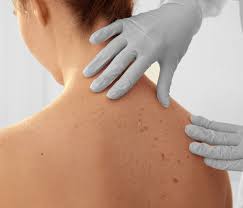Skin Lesions: What You Need To Know
Skin lesions are a relatively common occurrence, especially as we age. They can be benign or cancerous, and can occur anywhere on the body. While most skin lesions are harmless, it’s important to be aware of the different types and what to look for. In this blog post, we’ll explore the different types of skin lesions, what causes them, and how to spot something that may be cause for concern. We’ll also offer some tips on how to prevent skin lesions from developing in the first place.
What are skin lesions?
Most people have had a skin lesion at some point in their lives. A skin lesion is any abnormality on the skin, including anything from a mole to a wart. While most skin lesions are benign (non-cancerous), some can be cancerous.
There are many different types of skin lesions, and they can vary in size, shape, and color. Some common types of skin lesions include:
Moles: Moles are small, dark spots on the skin that can be present at birth or develop over time. Most moles are benign, but some can become cancerous.
Warts: Warts are small growths on the skin that are caused by viruses. They can be painful and sometimes difficult to treat.
Cysts: Cysts are sacs filled with fluid that can form under the skin. They may be painful and can sometimes rupture and release their contents onto the surface of the skin.
Skin tags: Skin tags are small growths of excess skin that often appear in areas where the skin rubs together, such as on the neck or underarms. They are usually harmless but can sometimes become irritated if they catch on clothing or jewelry.
What are the different types of skin lesions?
There are many different types of skin lesions, and they can be classified in a number of ways. The most common way to classify skin lesions is by their appearance:
* Macule: A small flat spot on the skin that is usually no more than 1 cm in diameter. Macules are usually benign (non-cancerous).
* Papule: A small raised bump on the skin that is usually no more than 1 cm in diameter. Papules can be either benign or malignant (cancerous).
* Nodule: A larger raised lump on the skin that is usually more than 1 cm in diameter. Nodules can be either benign or malignant.
* Plaque: A flat, raised area of the skin that is typically larger than 1 cm in diameter. Plaques can be either benign or malignant.
* Vesicle: A small blister that contains clear fluid. Vesicles are usually benign but can sometimes indicate an infection or allergic reaction.
* Bulla: A large blister that contains clear fluid. Bullae are usually benign but can sometimes indicate an infection or allergic reaction.
What causes skin lesions?
There are many potential causes of skin lesions, including injuries, infections, and medical conditions.
Injuries: Skin lesions can be caused by physical trauma, such as a cut, scrape, or burn. They can also result from chemical burns or exposure to extreme temperatures.
Infections: Bacterial, viral, and fungal infections can all lead to skin lesions. Common examples include impetigo, cellulitis, and athlete’s foot.
Medical Conditions: Many medical conditions can cause skin lesions as a symptom or side effect. These include autoimmune disorders like psoriasis and eczema, as well as cancerous growths like melanoma and basal cell carcinoma.
Skin Lesion Prevention
Here are some tips for preventing skin lesions:
-Wear sunscreen every day, even when it’s cloudy.
-Avoid sunburns by seeking shade and covering up with clothing when outside for extended periods of time.
-Do a monthly self-exam of your skin, checking for any new or changing moles or other growths.
-See a dermatologist regularly for professional skin exams.
-If you have any moles or other growths that concern you, have them checked out by a doctor.
Conclusion
There are many different types of skin lesions, and it can be difficult to know which one you have without seeing a doctor. However, it is important to be familiar with the different types so that you can seek treatment if necessary. If you think you may have a skin lesion, please consult a medical professional as soon as possible.









![Anso FG Reviews: UPDATED 2024 [ansofg.com] Anso FG Reviews UPDATED 2024 [ansofg.com]](/wp-content/uploads/2023/12/Anso-FG-Reviews-UPDATED-2024-ansofg.com_-100x70.png)








